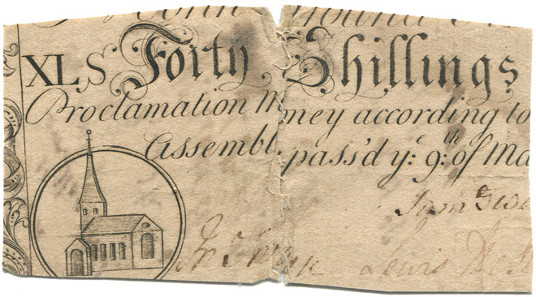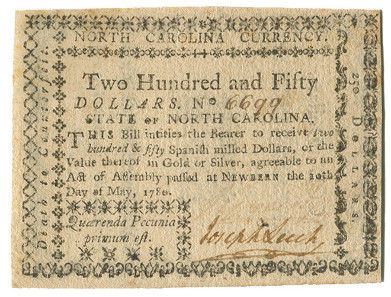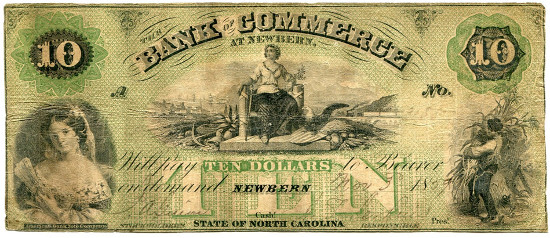by Ruedi Kunzmann, SINCONA AG, Zurich
translated by Annika Backe
New Bern, that sounds quite similar to Bern, the capital of Switzerland. As a matter of fact, this American town in North Carolina was founded early in the 18th century, by nearly 100 immigrants from Bern, under the leadership of high-ranking citizens who bore such names as von Graffenried, Ritter, Isot, and Michel. They were complemented by a few Anabaptists, which were rather unpopular in Bern, as well as 600 Palatines from Great Britain, the migration route leaving virtually no other option than to cross England. Likewise part of the endeavor was the explorer and well-known writer John Lawson. After having received written permission to establish a settlement by Anne, Queen of England, on August 22, 1709, the immigrants embarked on their journey to the young British colony. They successfully crossed the Atlantic Ocean and arrived in British Carolina where they founded New Bern in late autumn 1710.
Historiography informs us that severe hostilities between the settlers and the Tuscarora Indians broke out only a couple of months later. During one such conflict, John Lawson was taken captive and killed, while New Bern was almost completely destroyed by the Indians. Many of the settlers lost their lives as well. As early as 1712 and thanks to the help of British troops, however, the Indians were defeated. The surviving colonists decided to stay.
After only a short period of time, New Bern became an important city, with thriving agriculture and trade. The conditions were particularly favorable for New Bern to which a truly universal concept applied: it will be only possible for the necessary infrastructure to develop if streets and rivers facilitate the exchange of goods, if families are started and schools are founded, if all sorts of shops are established, and if the church is able to start its missionary work (the latter being valid for past times). All this was possible in the newly founded city. It is that era from which our first numismatic testimonies come: the banknotes.
British Colony Carolina, colonial currency, 40 shillings, March 9, 1754 (Pick S2158).
This rather early banknote still states the British denomination, shillings, while omitting any clear textual reference to New Bern. The note’s illustration, though, shows the city’s first Anglican Church building that was erected in the early 1750s. As will become clear a bit later, it is quite possible that this banknote was likewise printed there.
New Bern grew more and more important in other regards as well: the first judicial academy was built there, and the Royal Governor, William Tryon, chose New Bern as the capital of the Royal Colony of North Carolina in 1766. The governor’s home, Tryon Palace, thus became the first permanent capitol of the British administration.
A few years later, this center of administration became the gathering place for the independence movement to the creation of an American state. The protest of Tryon and the British authorities notwithstanding, the house was the site of a provincial congress in 1774, and in the summer the following year, New Bern became a part of the American state of North Carolina.
The new currency was called dollar, as evidenced by the following banknote.
State of North Carolina, 250 dollars, May 10, 1780 (Pick S2271a).
Here we encounter another historically significant person: James Davis, who was the responsible printer of this banknote, as stated on the reverse. In 1749, James Davis set up his printing press and turned out the young state’s first newspaper, called “North Carolina Magazine”. Henceforth, Davis was regularly commissioned to print banknotes. In the years between 1749 and 1780, that made at least 13 contracts, of which ten were still for British denominations and three for dollars.
By the mid-19th century, New Bern developed into an important center of export, on a national, American scale but also in regard to the trade with European countries. Back then, some 5,000 to 6,000 people lived in New Bern that was connected to other American cities by railroad. Banks were established, in order to improve cash flow.
Bank of Commerce at Newbern. 10 dollars, November 3, 1839 (Haxby NC-40/G4b).
As listed in the literature on banknotes, in the time between 1830 and 1860, New Bern had a total of six banks which illustrate the city’s importance: the Bank of Commerce at Newbern, the Merchants’ Bank of Newbern, the Bank of New Bern, as well as the Second Bank of North Carolina, the Bank of the State of North Carolina, and the State Bank of North Carolina, all of which had branches in New Bern where their own banknotes were issued.
Merchants’ Bank of Newbern. 5 dollars, November 8, 1845 (Haxby NC-45/G6).
In the 1860-1865 War of the Secession, New Bern fought at the side of the Confederate States. And in 1862, it witnessed a battle fought at the very city gates. Fortunately, New Bern did not suffer any major damages. The banknotes of the Confederates, however, were printed elsewhere. Furthermore, it was the banknotes of the United States of America that was to become the sole currency in use.
Finally, another story is worth mentioning, which likewise renders New Bern historically significant, yet in a different manner. In 1898, a pharmacist called Caleb Bradham invented a drink that was initially known and sold as “Brad’s Drink” but was renamed soon after: “Pepsi Cola”. But that is another story.
On October 16, 2015, Sincona AG is going to auction off several lots comprising New Bern banknotes. Please find the auction here.
For the Sincona AG website, please click here.
Please find more information on the old and the new Bern here.
This site provides a brief overview of North Carolina.
Bibliography:
- Bigler, Manuel: 300 Jahre New Bern, in Berner Zeitschrift für Geschichte, 71 (2009), p. 1-27
- Reavis, Scott Aaron: James Davis: North Carolina’s first printer. University of North Carolina, Chapel Hill, 2000
- SINCONA AG, Zürich: Auktion 15 (17. Okt. 2013), Lot 4548; Auktion 27 (16. Okt. 2015), Lots 5602-5604








